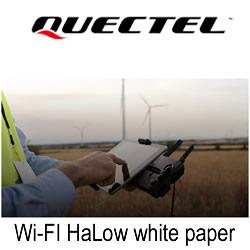Velodyne LiDAR and BoE Systems Partner for Integrated UAV-Borne LiDAR in Geospatial Data Collection
BoE Systems LiDAR platforms leverage lightweight Velodyne 3D LiDAR sensors for safe and accurate inspections of land, work sites, and equipment
SAN JOSE, Calif.--(BUSINESS WIRE)--Velodyne LiDAR Inc., the world leader in 3D vision systems for autonomous vehicles, today announced that it has partnered with BoE Systems to integrate its VLP-16 Puck and Puck LITE 3D LiDAR sensors into BoE Systems UAV fleet for geospatial data collection and analysis.
With this integration, BoE Systems provides full 360° imaging of geography and equipment for a multitude of industries with a critical need for quick, safe, and accurate aerial inspections, including transportation, utilities, telecommunications/infrastructure, construction, aggregate, forestry, and agriculture. BoE Systems acquires imaging data, processes it, and works with customers for tailored analysis and inspection reports, allowing them to address immediate and future needs and compliance issues. In addition, BoE Systems proprietary hardware and software integrations provide digital maps with a level of detail that allows for the development of highly accurate flood models, drainage analysis, Building Information Modeling (BIM), contour mapping, and more.
"UAV mapping is a nascent industry that has quickly evolved with the adoption of LiDAR sensor technology," said Mike Jellen, President and Chief Commercial Officer, Velodyne LiDAR. "With BoE Systems integration of Velodynes advanced VLP-16 Puck and Puck LITE sensors, the result is an incredibly valuable service that quickly and accurately maps geography and equipment to save customers critical man-hours, cost, and effort."
"BoE Systems hardware and software integrations leverage cutting edge technology like Velodynes VLP-16 LiDAR sensors to produce highly accurate 3-dimensional environmental models for industry professionals," said Jason Littrell, President, BoE Systems. "Those professionals appreciate that our systems can do the job quickly, safely, accurately, and without breaking the bank."
About Velodyne LiDAR
Founded in 1983 and headquartered in Silicon Valley, Velodyne is a technology company known worldwide for its real-time 3D LiDAR sensors. The company evolved after founder/inventor David Hall developed the HDL-64 Solid-State Hybrid LiDAR sensor in 2005. Since then, Velodyne LiDAR Inc. emerged as the unmatched market leader of real-time 3D vision systems used in a variety of commercial applications including autonomous vehicles, vehicle safety systems, mobile mapping, aerial mapping, and security. Its products range from the high-performance, surround view Ultra-Puck™ VLP-32, classic HDL-32/64 and cost-effective VLP-16, to the upcoming, hidden Velarray™. Velodynes rich suite of perception software and algorithms are the key enablers of its perception systems. Velodyne supports customers from offices in San Jose, Detroit, Frankfurt, and Beijing. For more information, visit http://www.velodynelidar.com.
About BoE Systems
BoE Systems integrates cutting-edge hardware and software to provide highly accurate geospatial data collection solutions. Our drone-based aerial LiDAR systems create detail-rich 3-dimensional models for a variety of industries such as transportation, utilities, mining, construction, and more. Analytics are applied to determine critical data points such as geodetic locations, slope identification, point-to-point measurements, volumetrics, and more. Our models are perfect for creating digital elevation models, overlaying contour lines, and even supporting predictive analytics such as flooding and drainage analysis. For more information, visit www.boesystems.com or contact us at info@boesystems.com.
Featured Product

How to overcome GNSS limitations with RTK correction services
Although GNSS offers ubiquitous coverage worldwide, its accuracy can be hindered in some situations - signals can be attenuated by heavy vegetation, for example, or obstructed by tall buildings in dense urban canyons. This results in signals being received indirectly or via the multipath effect, leading to inaccuracy, or even blocked entirely. Unimpeded GNSS positioning in all real world scenarios is therefore unrealistic - creating a need for supporting technologies, such as real time kinematic (RTK) positioning and dead reckoning, to enable centimeter-accuracy for newer mass-market IoT devices.
